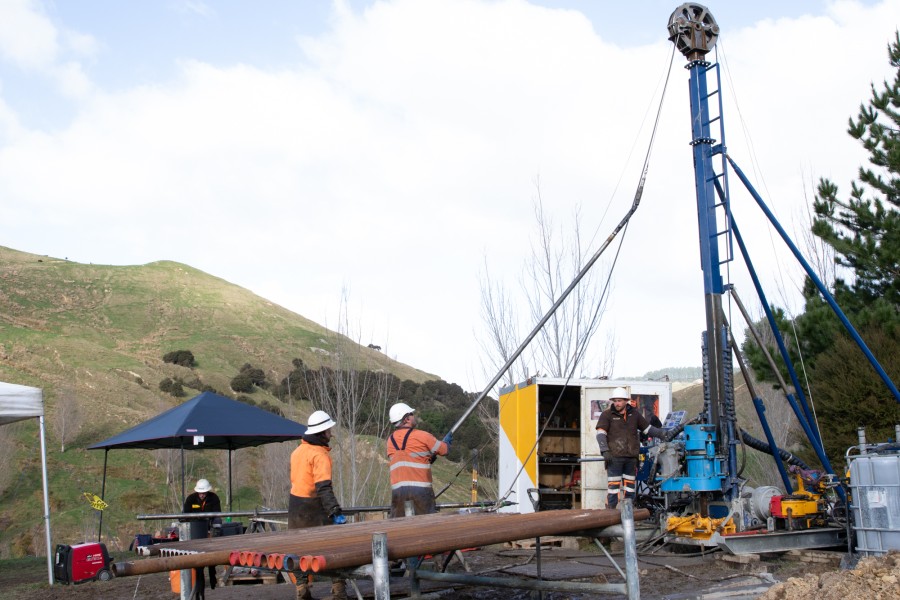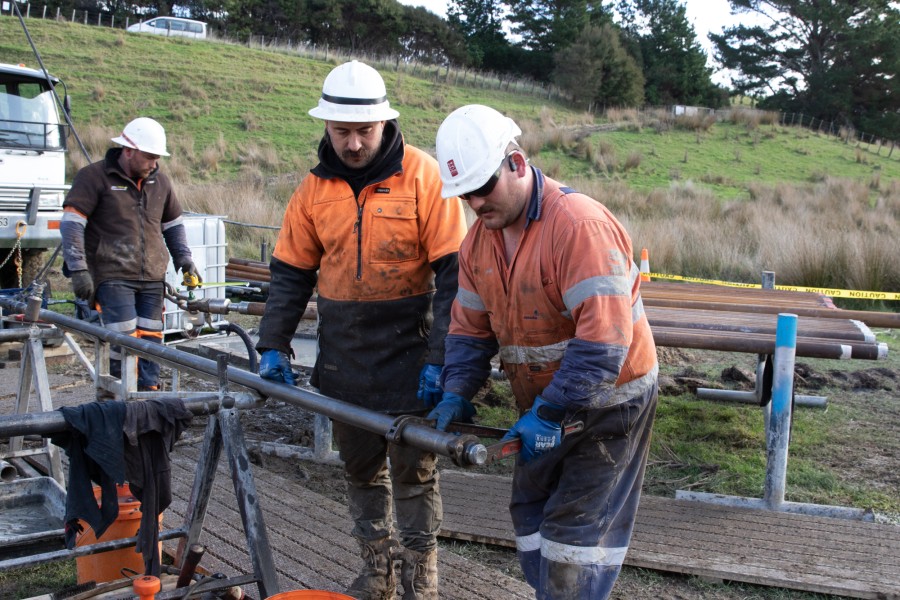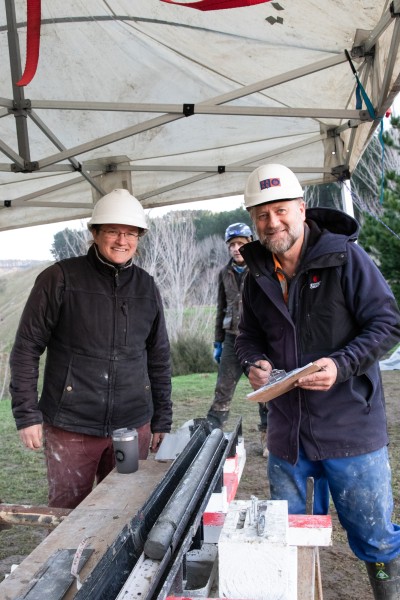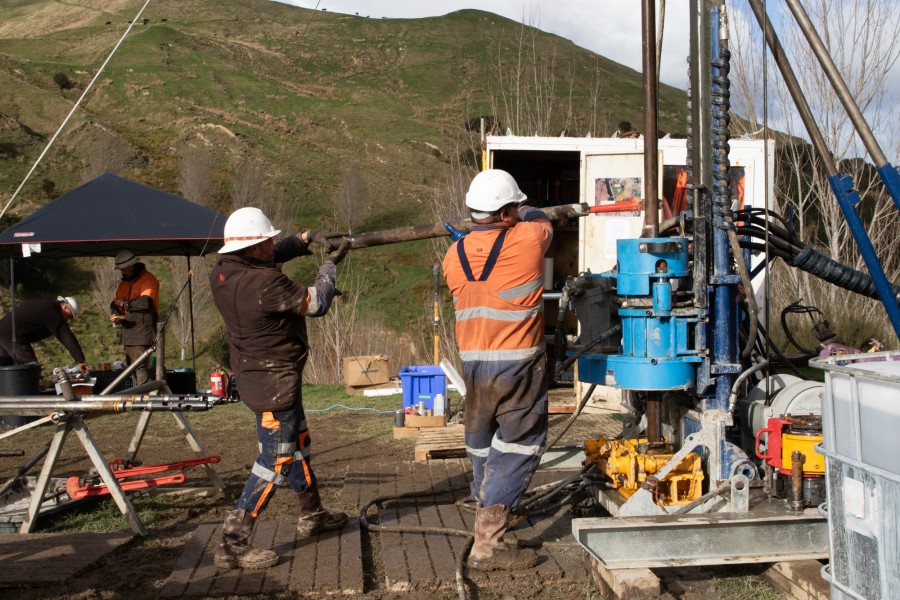Test of modified drilling system a success

Our updated Antarctic Intermediate Depth Drill system has been put to the test in rural New Zealand and passed with flying colours.
It’s been a busy time behind the scenes since the last SWAIS2C season at KIS3. After technical challenges halted our drilling operations, the AIDD was traversed back across the Ross Ice Shelf to Scott Base. It was then shipped back to Aotearoa New Zealand, for a review by independent engineers.
Our engineering team have designed, engineered and installed several modifications to the system. These include new weight-engaged foot slips, a new winch, an updated mast, and a new base.
“There’s been a lot of effort put in, by a lot of different people, to modify the system for success this coming year,” says SWAIS2C Co-Chief Scientist Molly Patterson (Binghamton University).
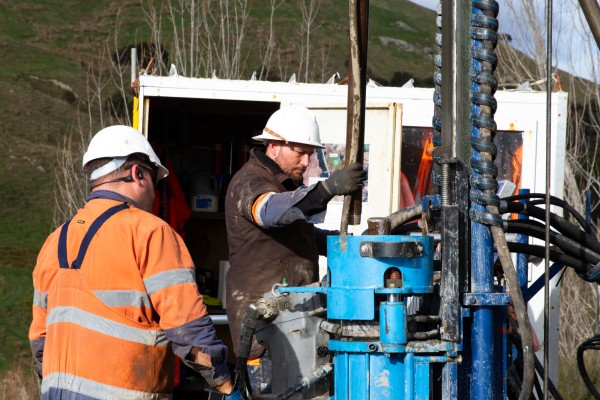
The foot slips have an excellent pedigree, having once been part of a rig used in ANDRILL, the scientific drilling project that is one of the predecessors of SWAIS2C.
SWAIS2C Drilling Engineer James MacPhail (Te Herenga Waka – Victoria University of Wellington Antarctic Research Centre) led the design and rebuild of the AIDD and says that the refurbished ANDRILL foot slips are a great addition to the system.
“They work really well, they’re very reliable and strong. Together the improvements reduce the chances of the drill string slipping.”
To ensure that the modifications function as intended, a week of testing took place at a farm in the Wairarapa region. This was also an opportunity for the drill team for the upcoming season to get hands on experience with the drilling system.
“It’s been great for camaraderie getting the team together. Seeing the drillers and engineers address any technical challenges as they arise, is really encouraging,” says Patterson.
More than 100 m of sediment core was recovered during the testing. Our updated Antarctic Intermediate Depth Drill system has been put to the test in rural New Zealand and passed with flying colours.

Following the challenges of the previous field seasons, seeing the Big Rig in action, successfully retrieving core, was a high point.
“It’s been extremely exciting to see the core come up, and to know that we’ll be going into the deep field with a system that’s proven to work,” says Patterson.
With the drilling system having received a green light for the next field season, it will now be prepared for shipping back to Antarctica, and a traverse across the Ross Ice Shelf later this year.
More recent articles
View all articles
Al the Antarctic deep-field camp chef
There are many home comforts that our on-ice team had to learn to do without, but delicious meals was not one!
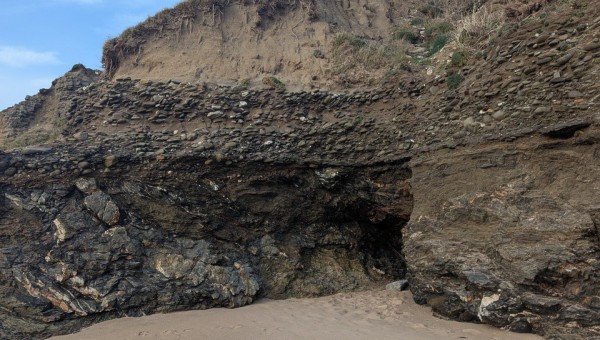
What ancient ice sheets can tell us about future sea-level rise
When visiting Godrevy beach on the north Cornish coast, most people look out to sea at the lighthouse, surfers and seals rather than the cliffs behind.
